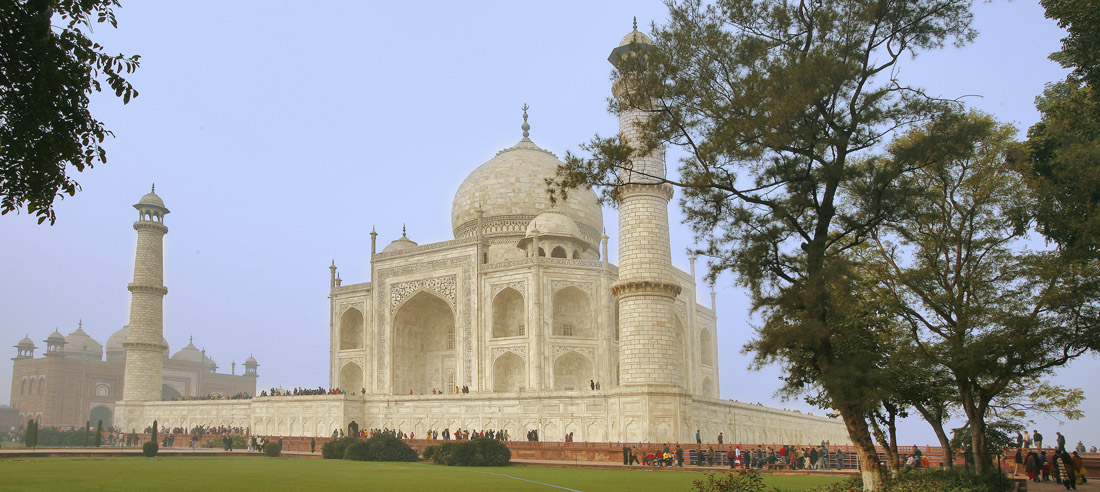Darwaza-i-Rauza:
Darwaza-i-Rauza or most popularly the Great Gate, a four storeyed main gateway of the Taj Mahal is 100 feet high and is built in red sandstone. The Arabic calligraphy from the Holy Quran and motifs of entwined flowers, leaves and vines spiraling down its niches. These motifs have been made by semi-precious stones inlaid in the white marble.
The great gate stands to the north of the entrance forecourt (jilaukhana) and provides a symbolic transition between the worldly realm of bazaars and caravanserai and the spiritual realm of the paradise garden, mosque and the mausoleum. Its rectangular plan is a variation of the 9-part hasht bihisht plan found in the mausoleum
The Taj Mahal:
The popular view of the Taj Mahal as one of the world’s monuments to a great “love story” is born out by the contemporary accounts and most scholars accept this has a strong basis in fact. The building was also used to assert Jahani propaganda concerning the ‘perfection’ of the Mughal leadership. The extent to which the Taj uses propaganda is the subject of some debate amongst contemporary scholars. This period of Mughal architecture best exemplifies the maturity of a style that had synthesised Islamic architecture with its indigenous counterparts.
Under the reign of Shah Jahan, the symbolic content of Mughal architecture reached a peak. The Taj Mahal complex was conceived as a replica on earth of the house of the departed in paradise (inspired by a verse by the imperial goldsmith and poet Bibadal Khan). This theme, common in most Mughal funerary architecture, permeates the entire complex and informs the detailed design of all the elements. A number of secondary principles also inform the design, of which hierarchy is the most dominant. A deliberate interplay is established between the building’s elements, its surface decoration, materials, geometric planning and its acoustics.
The Taj Mahal represents the finest and most sophisticated example of Mughal architecture. Its origins lie in the moving circumstances of its commission and the culture and history of an Islamic Mughal empire’s rule of large parts of India. The distraught Mughal Emperor Shah Jahan commissioned the mausoleum upon the death of his favorite wife Mumtaz Mahal.


